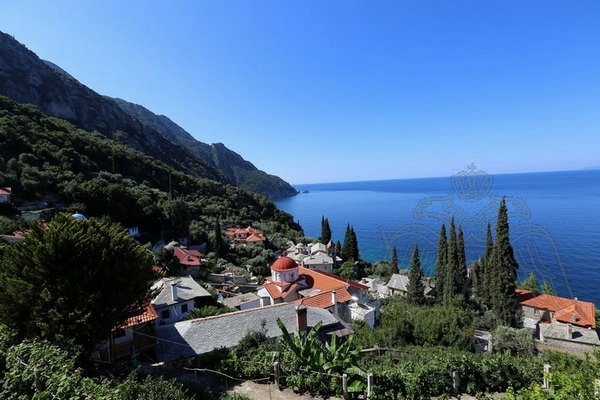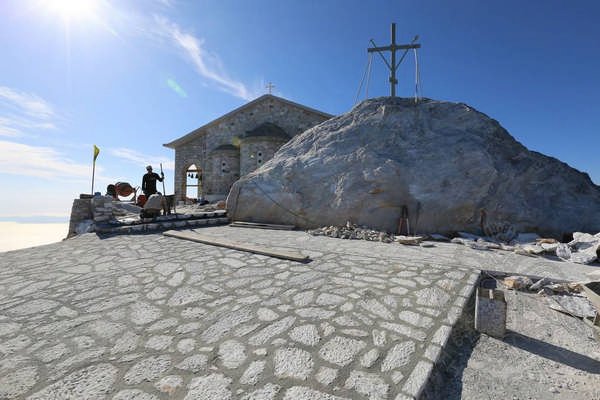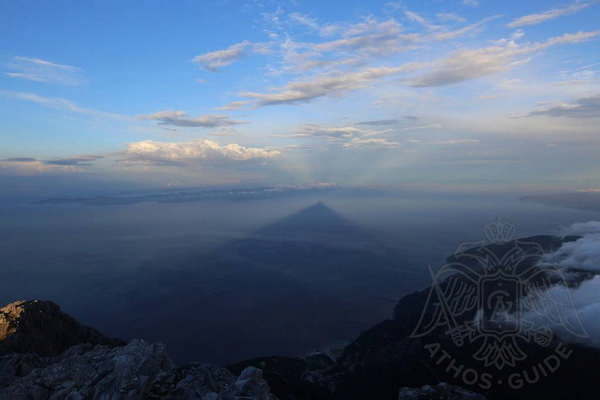
Only a few hours away from the city of Thessaloniki there is a world beyond our common material reality, a state beyond every kind of state, a society that ignores the common rules of social life and yet preserves the foundaments of communion. There is Mount Athos, the land of Theotokos.
Mount Athos in Greece is the only one, between all the monastic states ever established in the Orthodox East, that has survived, rested untouched and maintained an unbroken history from the twelfth century onwards.
Mount Athos is often described as an Ark. Just as Noah's Ark saved God's creatures from the flood, so too Mount Athos saves humanity by bringing us closer to God.
The second attribute of this Ark is that it preserves priceless traditions and our cultural inheritage.
How to Climb the Top of Mount Athos?
The path to the top of Mount Athos is difficult and dangerous. If you wish to visit it, you should never attempt this journey alone. It is a route adequate only for experienced travelers and guides. You should definitely check the weather forecast before starting your trip. Additionally, you should not forget to bring your mobile phone and a GPS with you. The most convenient route starts from the monastery of Great Lavra, but requires an overnight stay at the monastery or the Skete of Saint John the Forerunner.
Hiking Mount Athos
To climb up to the Mount of Athos, you need to take into account the equipment you will need for the overnight stay (at the shelter of “Panagia” and as well as at the peak of the mountain). If you have come with the sole purpose of climbing Athos, you should start your journey from the dock/staircase of Saint Anna or from Kleftiko. Карулья.jpg)
Be aware that the ferry from Daphne arrives at the dock around 13:30 and you should arrive at the shelter of “Panagia” before dark. The route is on the west side, which means that there will be a strong hot afternoon sun right at your back for the first few hours of the trip.
For overnight accommodation there are small shelters at the Cross (with a well, for 3-4 people) and at the Virgin Mary (with rainwater, for 10-12 people).
From Stavros, the trail climbs through a dense forest of chestnut trees, followed by fir trees. A little higher up, the forest thins out and pine trees appear. Gradually, the trees disappear and you reach the chapel at the shelter of “Panagia” (altitude 1500 m). It is worth spending the night there in order to get used to the climatic conditions and temperatures of the summit. The shelter can also be reached by donkeys from Saint Anna or Kerasia. From there, the trail is accessible only on foot. When the church was built on the summit (1894), a stone-lined path was laid out. However, it has now been destroyed.
How Long Does it Take to Climb Mount Athos?
You can leave some of your belongings at the shelter of “Panagia”, so that you won't have to carry a heavy load. You will need a waterproof windbreaker, as storms are quite frequent at the summit. If you get caught in a thunderstorm at the top, it is recommended that you get down and wait. From the shelter of the “Panagia” to the summit, the trail climbs in a peculiar zigzag direction to the northeast. The trail runs along the south side of the mountain. The west and northeast sides are accessible only to climbers. The time of the route Vogoroditsa - Summit is 2-2,5 hours.
What is There on the Top of Mount Athos?

At an altitude of 1500 meters there is the Church of Theotokos, built in 1665 by the Patriarch Dionysius III. However, it is stated that even before this date there must have been a church there, as Saint James was a monk until 1520. The church survived many disasters due to weather conditions and was restored in 1972 by the Monastery of Great Lavra.
The first church at the top of Athos was built by Saint Athanasios the Athonite himself (965), dedicated to the Transfiguration of the Lord. He also ordained that overnight vigils be held in it every year. This church was destroyed by lightning and thunder and was later rebuilt by the Patriarch Dionysius III.
Under Patriarch Joachim III (1895) the church was rebuilt. In 1901 the church was in a bad condition due to lightning. The present appearance of the building is the result of the reconstruction of 1977. Above the church, at the top (altitude 2033 m), there is a large iron cross (1897, 3x4 m).
The shadow of Mount Athos is visible on the sea surface to the east. One can notice the appearance of a pyramid with a sharp top. Legend has it that during sunset the shadow of Athos reaches as far as the island of Lemnos.
From the top of the mountain one can enjoy a stunning view of the entire Mount Athos peninsula. From there you can see the capital of Karyes, the Skete of Saint Andrew and the Holy Monastery of Koutloumousiou.
Visible from the Northeast slope are:
- the Monastery of Karakallou
- the Monastery of Philotheou
- the Monastery of Stavronikita
- the Monastery of Pantokrator
- the Skete of Theotokos
Visible from the Southwest slope are:
- the Monastery of Saint Paul and the tower of the pier
- the Monastery of Simonopetra
- the Monastery of Saint Panteleimon
- the Monastery of Xenophontos
- the pier of the Monastery of Zograf
- the island of Ammouliani

From the top one can see not only the sights of the Athonite peninsula, but also the other peninsulas of Halkidiki, Kassandra and Sithonia. Surprisingly, it is also possible to distinguish very distant places such as:
- Olympus (85 nautical miles)
- the island of Lemnos (37 nautical miles)
- the island of Thassos (35 nautical miles)
Perhaps it was this amazing panorama that inspired the claim that Mount Athos is the very mountain of the New Testament where Satan tempted Jesus Christ:
"Again, the devil took him to a very high mountain and showed him all the kingdoms of the world and their splendor. ‘All this I will give you’, he said, ‘if you will bow down and worship me’." (Matthew 4:8-9)

